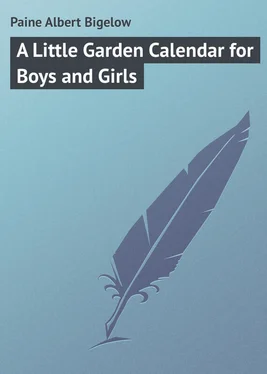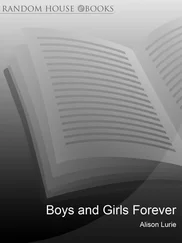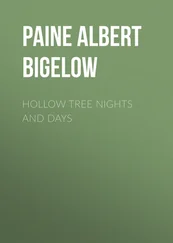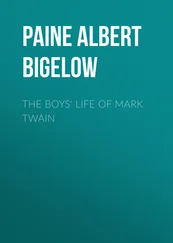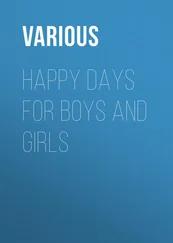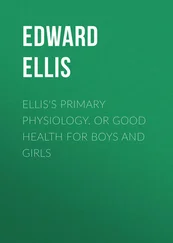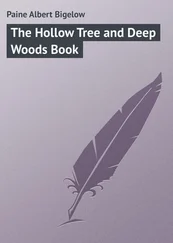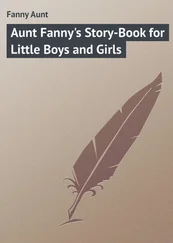Albert Paine - A Little Garden Calendar for Boys and Girls
Здесь есть возможность читать онлайн «Albert Paine - A Little Garden Calendar for Boys and Girls» — ознакомительный отрывок электронной книги совершенно бесплатно, а после прочтения отрывка купить полную версию. В некоторых случаях можно слушать аудио, скачать через торрент в формате fb2 и присутствует краткое содержание. ISBN: , Жанр: foreign_prose, на английском языке. Описание произведения, (предисловие) а так же отзывы посетителей доступны на портале библиотеки ЛибКат.
- Название:A Little Garden Calendar for Boys and Girls
- Автор:
- Жанр:
- Год:неизвестен
- ISBN:http://www.gutenberg.org/ebooks/48063
- Рейтинг книги:3 / 5. Голосов: 1
-
Избранное:Добавить в избранное
- Отзывы:
-
Ваша оценка:
- 60
- 1
- 2
- 3
- 4
- 5
A Little Garden Calendar for Boys and Girls: краткое содержание, описание и аннотация
Предлагаем к чтению аннотацию, описание, краткое содержание или предисловие (зависит от того, что написал сам автор книги «A Little Garden Calendar for Boys and Girls»). Если вы не нашли необходимую информацию о книге — напишите в комментариях, мы постараемся отыскать её.
A Little Garden Calendar for Boys and Girls — читать онлайн ознакомительный отрывок
Ниже представлен текст книги, разбитый по страницам. Система сохранения места последней прочитанной страницы, позволяет с удобством читать онлайн бесплатно книгу «A Little Garden Calendar for Boys and Girls», без необходимости каждый раз заново искать на чём Вы остановились. Поставьте закладку, и сможете в любой момент перейти на страницу, на которой закончили чтение.
Интервал:
Закладка:
Albert Bigelow Paine
A Little Garden Calendar for Boys and Girls
A Word to Teachers and Parents
When Dr. S. P. Langley, Secretary of the Smithsonian Institution, established the Children's Room in that great museum, he took for his motto, "Knowledge begins in wonder," and he put into this room a selection of specimens especially intended to excite interest in the young mind. The biggest bird and the littlest were placed side by side; curious eggs, nests, and insects – not many in number, but temptingly displayed – were ranged about to attract attention and to awake the desire to know more. It was the same Dr. Langley who had once declared that his chief interests in life were children and fairy stories, and it is in the little Washington room that we seem to find the thought embodied, for the children are there, and the fairy stories of nature are suggested on every hand.
It is with Dr. Langley's motto in mind that the "Little Garden Calendar" is offered to parents and teachers, and to children themselves who are old enough to read. The author has tried to tell in simple language a few of the wonders of plant life, and to set down certain easy methods of observation, including planting, tending, and gathering the harvests, from month to month, throughout the year. Along with this it has been his aim to call attention to the more curious characteristics of certain plants – the really human instincts and habits of some, the family relations of others, the dependence of many upon mankind, animals, and insects, and the struggle for existence of all. Simple botany plays a part in the little narrative, which forms a continuous story from chapter to chapter, interwoven with a number of briefer stories – traditions, fairy tales, and the like, all relating to plant life and origin. These are presented by way of entertainment – to illuminate fact with fancy – to follow, as it were, the path of knowledge through the garden of imagination.
The illustrations in this book are from excellent photographs – especially made for the various chapters – that the student of plant life may compare and identify with some degree of assurance as to varieties and particular specimens, especially in the matter of plant organisms. The volume is divided according to the calendar, for the reason that in the plant world there is interest for every month in the year if only someone is by to point the way, and it is for this purpose that the little story of Prue and Davy and their garden is offered to instructors in the schoolroom and at home, and to the young people themselves, with the greetings and good wishes of
The Author.JANUARY
I
YOU MAY BEGIN YOUR GARDEN RIGHT AWAY
THIS is the story of a year, and begins on New Year's day. It is the story of a garden – a little garden – and of a little boy and girl who owned the garden, and of the Chief Gardener, who helped them.
And the name of the little boy was David, after his grandfather. So they called him Davy, because when grandfather was a little boy, he had been called Davy, and this little boy wanted to be just as his grandfather had been – just the same kind of a little boy, with the same name and all.
And the name of the little girl was Prudence, and she was called Prue. For when her mother was a little girl, she had been called Prue, and the Chief Gardener still called her that, sometimes, when he did not call her just Mamma. And the little girl was five years old, and the little boy was 'most seven – "going-on seven" the little boy always said, when you asked him.
The garden was in a window, at first – in two windows, side by side – called a double window. It had to be in a window, because outside it was very cold, and the snow was white and deep on the beds where the Chief Gardener had flowers and vegetables in summer-time.
Prue and Davy were looking out on this white, snow-covered garden on New Year's afternoon. Christmas was over, and spring seemed far away. And there had been so much snow that they were tired of their sleds.
"I wish it would be warm again," said Davy, "so there would be strawberries and nice things to eat in the garden; don't you, Prue?"
"And nice green grass, and dandelions and pinks and morning-glories," said Prue, who loved flowers.
Then the little girl went over to where the Chief Gardener was reading. She leaned over his knee and rocked it back and forth.
"Will it ever be warm again?" she asked. "Will we ever have another garden?"
The Chief Gardener turned another page of his paper. Prue rocked his knee harder.
"I want it to be warm," she said. "I want it to be so we can plant flowers."
"And things," put in Davy, " nice things, to eat; pease and berries and radishes."
"Oh, Davy, you always want things to eat!" said the little girl. "We've just had our New Year's dinner!"
"But I'd be hungry again before the things grew, wouldn't I? And you like strawberries, too, and short-cake."
The Chief Gardener laid down his paper.
"What's all this about strawberry short-cake and morning-glories?" he asked.
"We want it to be warm," said Prue, "so we can have a garden, with pinks and pansies – "
"And pease – " began Davy.
"And a short-cake tree," put in the Chief Gardener, "with nice short-cakes covered with whipped cream, hanging on all the branches. That would suit you, wouldn't it, Davy boy?"
The very thought of a tree like that made Davy silent with joy; but Prue still rocked the knee and talked.
"When will it be warm? When can we have a garden?" she kept asking.
"It is warm, now , in this room," said the Chief Gardener, "and you may begin your garden right away, if you like."
The children looked at him, not knowing just what he meant.
"In the window," he went on. "There are two, side by side. They are a part of the garden, you know, for we always see the garden through them, in summer. You remember, we said last year they were like frames for it. Now, suppose we really put a little piece of garden in the windows."
Prue was already dancing.
"Oh, yes! And I'll have pansies, and roses, and hollyhocks, and pinks, and morning-glories, and – "
"And I'll have peaches, and apples, and strawberries, and pease – "
"And a field of corn and wheat," laughed the Chief Gardener, "and a grove of cocoanut trees! What magic windows we must have to hold all the things you have named. They will be like the pack of Santa Claus – never too full to hold more."
"But can't we have all the things we like?" asked Davy, anxiously.
"Not quite all, I'm afraid. The hollyhocks and roses that Prue wants do not bloom the first year from seed. It would hardly pay to plant them in a window-garden, and as for peach and apple trees, I am afraid you would get very tired waiting for them to bear. It takes at least five years for apple-trees to give us fruit, often much longer. Peach-trees bear about the third year. I think we would better try a few things that bloom and bear a little more quickly."
II
YOUR GARDEN MAY NOT LOOK AS I HAVE IT HERE
The Chief Gardener took his pencil and a piece of paper, and drew a little plan. He was not much of an artist, and sometimes when he drew things he had to write their names below, so that Prue and Davy could tell which was the rabbit and which was the donkey, and so they wouldn't think the kitten was a lion. But a window was not so hard, and then he could put names under the plants, too. On the next page is the picture that the Chief Gardener drew.
While he was making the picture, the children had been asking questions.
Читать дальшеИнтервал:
Закладка:
Похожие книги на «A Little Garden Calendar for Boys and Girls»
Представляем Вашему вниманию похожие книги на «A Little Garden Calendar for Boys and Girls» списком для выбора. Мы отобрали схожую по названию и смыслу литературу в надежде предоставить читателям больше вариантов отыскать новые, интересные, ещё непрочитанные произведения.
Обсуждение, отзывы о книге «A Little Garden Calendar for Boys and Girls» и просто собственные мнения читателей. Оставьте ваши комментарии, напишите, что Вы думаете о произведении, его смысле или главных героях. Укажите что конкретно понравилось, а что нет, и почему Вы так считаете.
